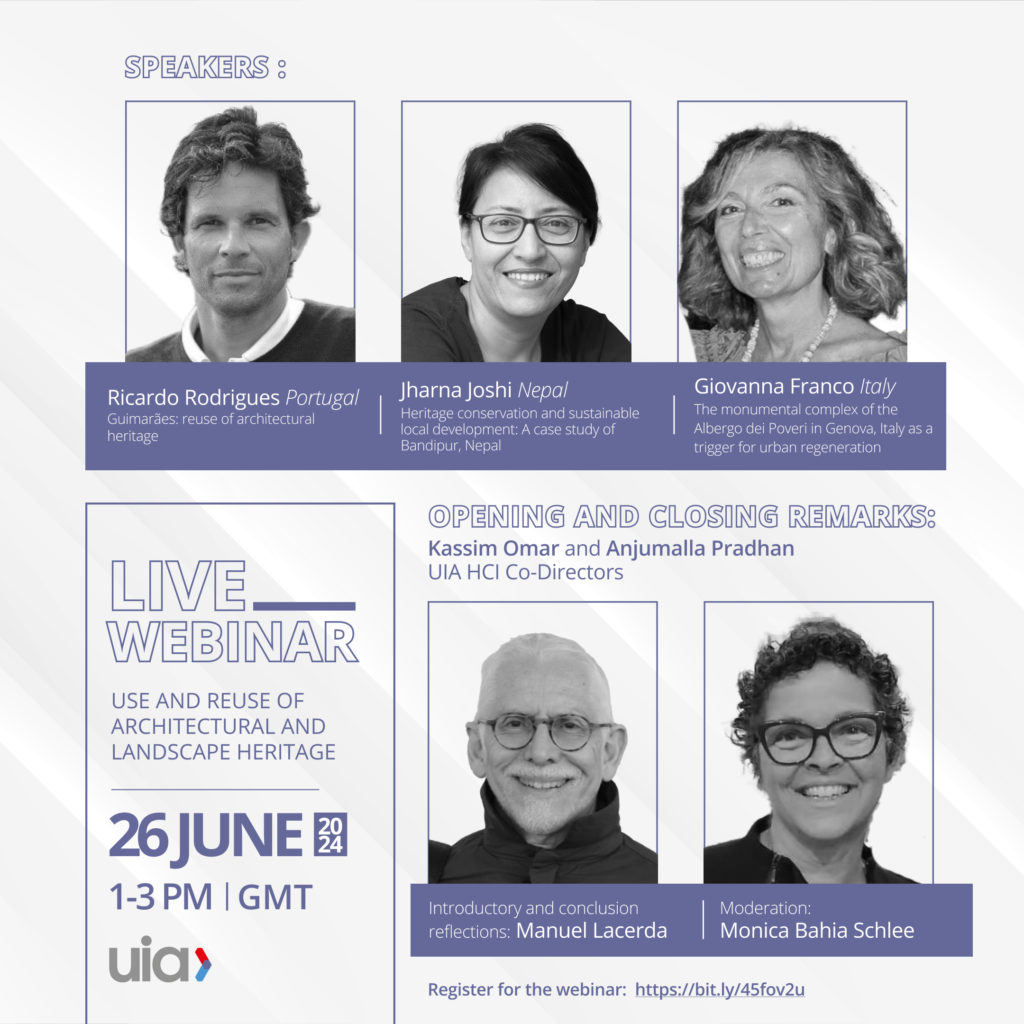The UIA Heritage and Cultural Identity Work Programme held a webinar on 26 June 2024. Discussing the “Use and Reuse of Architectural and Landscape Heritage” is composed of two roundtables in order to allow disclosure of case studies of all the UIA regions.

What is the relevance of exchanging ideas about the use and reuse of architectural, urban and landscape heritage?
The emergencies that the world and each of our continents are going through today could put that topic on a secondary level for being apparently disconnected from all these serious problems. In reality, however, cultural heritage, as a result of a continuous interaction between expressions of different civilizations over time, is at the heart of many phenomena that we experience today. In addition to climatic phenomena, migratory movements, hyper-urbanization processes, the accelerated growth of large cities and metropolitan areas, the loss of population and desertification of many territories, among others, are factors in weakening identities, both at the local, regional or national level, therefore contributing to processes of fragmentation and deconstruction of societies and individuals.
Increasing mobility across the planet, globalization and the exponential growth of information and communication technologies, with emphasis on social networks and, on another level, design tools, tend to standardize the entire planet and undo the mosaics of diversity, so rich and complex, that characterizes our cities, our landscapes and our communities. On the other hand, they allow for more knowledge sharing, enabling the development of new mentalities, new ways of thinking and new paradigms, in remarkable processes of resilience, rewriting cultural mosaics made of complex interactions and based on new values, demonstrating the dynamic nature of cultural heritage.
Architectural, urban and landscape heritage only exists because there are communities that inhabit and scroll through them; Using this heritage means giving it continuity, as the only means of maintaining it, and reusing it means reviewing its potential, its characteristics and its values to respond to the needs of the present time. In these processes, what is gained and what is lost? What strategies can we adopt to better respond to these challenges? How can we better reconcile the need for development with the need to preserve heritage?